AI Sensors for Perennial Plant Stress Detection
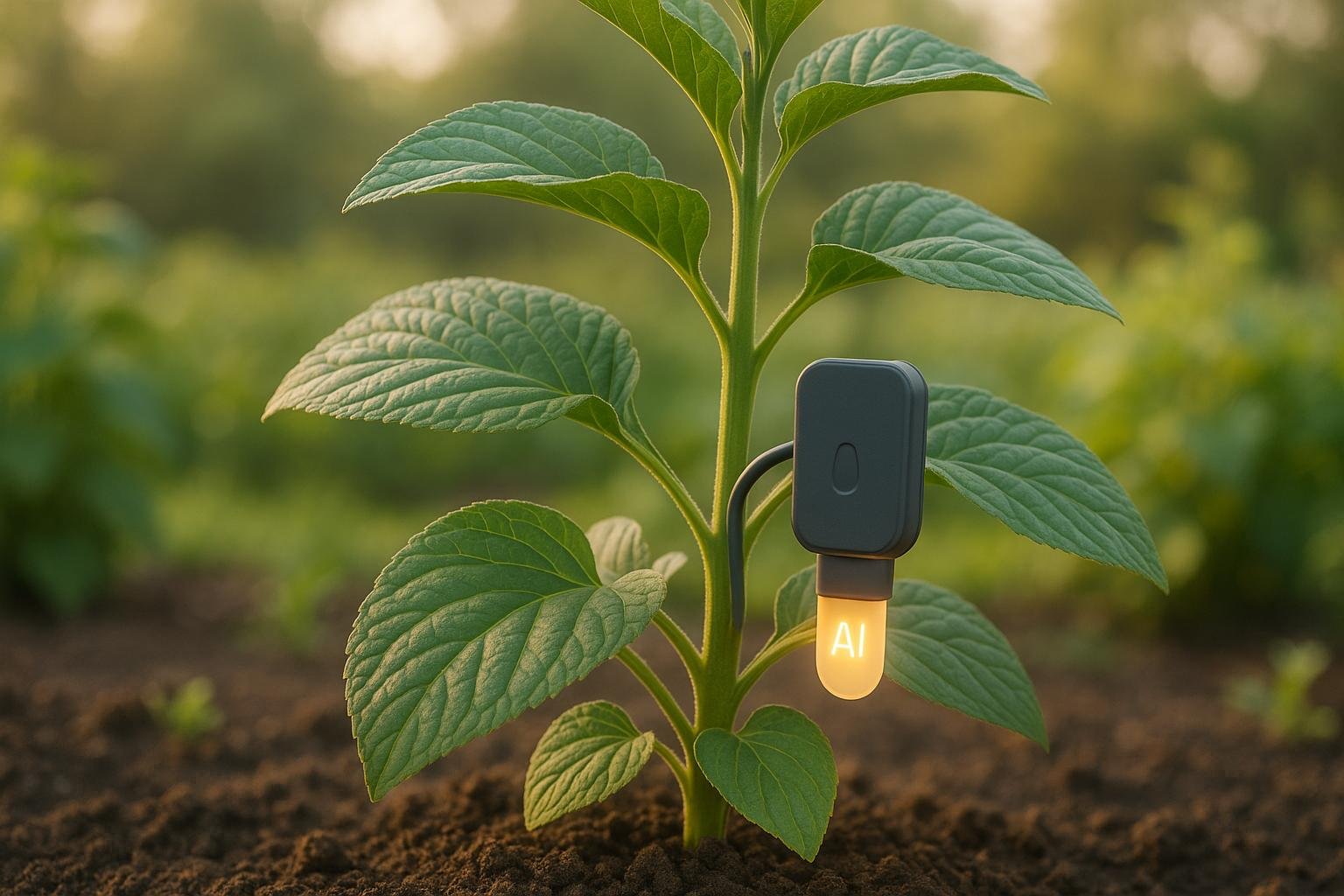
AI sensors are changing how we care for perennial plants by detecting stress early and improving water management. These tools monitor soil moisture, leaf temperature, nutrient levels, and more, offering precise insights that help gardeners address issues before they worsen. By combining real-time data and advanced algorithms, they enable smarter irrigation, tailored plant care, and better resource efficiency.
Key Takeaways:
- Stress Detection: AI sensors identify early signs of plant stress caused by water shortages, nutrient imbalances, or extreme temperatures.
- Water Management: Sensors optimize irrigation by delivering water only where and when needed, reducing waste.
- Sensor Types: Includes soil moisture, nutrient, salinity, gas exchange, thermal imaging, and hyperspectral sensors.
- Applications: Useful for home gardens, professional landscaping, nurseries, and research projects.
- Challenges: High costs, setup complexity, and maintenance requirements can be barriers.
AI-driven tools like AIGardenPlanner further enhance gardening by recommending low-water plants and creating efficient maintenance schedules. These technologies are helping gardeners and landscapers create healthier, low-water gardens with tailored care.
Scientists Create a Wearable Sensor for Plant Leaves to Detect Water Loss Early

Main AI Sensor Technologies for Plant Stress Monitoring
AI sensors are transforming the way we monitor plant health, offering tools that pick up stress signals long before they're visible to the human eye. By combining various technologies, these sensors provide a detailed picture of plant well-being, helping gardeners and landscapers address issues early.
Types of AI Sensors and How They Work
AI sensors come in various forms, each designed to target specific aspects of plant health. Here's how they function:
- Soil moisture sensors: These are the backbone of most AI monitoring systems. Using electromagnetic analysis or electrical conductivity, they measure water content in the soil and send alerts when moisture levels drop below the optimal range for specific plants.
- Nutrient sensors: By analyzing the soil's chemical makeup in real time, these sensors track key nutrients like nitrogen, phosphorus, and potassium. They help prevent problems like poor flowering or stunted growth before they become visible.
- Soil salinity sensors: Particularly useful in areas with hard water or near coastlines, these sensors detect salt levels in the soil. High salinity can interfere with water absorption, even when moisture levels seem sufficient. By monitoring salt concentrations, these sensors help protect sensitive plants from long-term damage.
- Gas exchange sensors: Among the most advanced tools, these sensors measure oxygen and carbon dioxide levels around plant roots and leaves. This data provides insights into photosynthesis and root health, enabling early detection of stress.
- Thermal imaging sensors: Using infrared technology, these sensors detect temperature variations on plant surfaces. They are especially helpful for monitoring large garden areas, as they can identify stressed plants based on irregular thermal patterns.
- Hyperspectral imaging sensors: These sensors analyze how plants reflect light across various wavelengths. By identifying changes in pigmentation and cellular structure, they can pinpoint stress caused by diseases, nutrient deficiencies, or water shortages.
How AI Algorithms Work with Sensors
AI algorithms bring these sensors to life by analyzing the data they collect and turning it into actionable insights. Here's how they do it:
- Machine learning models: These systems study stress patterns specific to different plant species. They combine historical data with weather forecasts to anticipate problems and send alerts before stress levels rise.
- IoT integration: Sensors across a garden or landscape communicate with each other, sharing data to identify whether stress is localized or widespread. This ensures care measures are tailored to the situation.
- Data fusion algorithms: By combining information from multiple sensor types - such as moisture, temperature, and nutrient levels - these algorithms provide a comprehensive view of plant health. This integration reduces false alarms and improves the accuracy of stress detection.
Together, these technologies are making plant care smarter and more efficient.
Practical Uses of AI Sensors
The applications of AI sensors extend from home gardens to large-scale projects. Here are a few examples:
- Home gardening: Affordable sensors now allow homeowners to monitor their plants through smartphone alerts. These systems help differentiate the needs of drought-tolerant species from water-loving ones, improving water use and plant care.
- Professional landscaping: Commercial landscaping projects benefit from AI sensors that manage large installations. These systems can automatically adjust irrigation schedules and alert crews to potential issues, reducing labor costs and improving plant survival rates.
- Nurseries: AI sensors are used to fine-tune growing conditions for perennial plants. By optimizing fertilization and preparing plants for sale, nurseries ensure healthier stock for their customers.
- Research and breeding: Advanced sensor networks help researchers study how different plants respond to stress. This data is invaluable for developing drought-resistant varieties and making recommendations for plants suited to specific climates.
When paired with garden design tools like AIGardenPlanner, sensor data can even help with plant placement, ensuring that species with similar care needs are grouped together for easier maintenance. These innovations are paving the way for more precise and sustainable gardening practices.
Uses in Low-Water Gardening and Landscaping
AI-driven sensor technologies are transforming low-water gardening and landscaping, making it easier to design and maintain drought-resistant environments. From the arid Southwest to water-scarce regions like California and Texas, these tools are helping create landscapes that thrive with minimal water.
Choosing Drought-Resistant Perennial Plants
AI sensors continuously monitor factors like soil moisture, temperature, and plant stress to identify perennials that can handle dry conditions. For example, plants like purple coneflower, Russian sage, blanket flower, and black-eyed Susan are often highlighted by these systems as thriving in low-water, high-heat environments.
Platforms such as AIGardenPlanner use sensor data to group plants with similar water needs, combining aesthetics with water-use efficiency. This ensures that drought-tolerant plants are paired correctly, making irrigation more effective.
Another key tool, hyperspectral imaging sensors, detects subtle signs of stress in plants, helping to determine their long-term drought tolerance. For instance, some lavender varieties are better suited for humid conditions, while others excel in dry climates. By analyzing chlorophyll levels and stress markers, these sensors make it easier to select plants that can withstand prolonged dry periods.
AI-Powered Irrigation Systems
AI also plays a crucial role in optimizing irrigation. Smart systems combine data from soil moisture sensors, weather forecasts, and evapotranspiration rates to deliver water precisely when and where it's needed.
Root zone monitoring is a standout feature, allowing water to reach the areas that need it most. Sensors placed at different soil depths track moisture levels and root activity, preventing surface overwatering while ensuring deeper roots get the moisture they need, especially during the establishment phase of new plants.
These systems adjust dynamically to weather conditions. For instance, they might delay watering if rain is expected or increase it during heatwaves. This predictive approach helps plants build resilience while minimizing water waste.
Low-Water Landscaping Examples
Across the U.S., AI-powered sensor technology is enabling stunning, drought-adapted landscapes that balance beauty with water conservation.
-
Mediterranean-Style Gardens in California
Sensor networks maintain the health of plants like rosemary, thyme, oregano, and Mediterranean spurge while significantly cutting water use. Soil salinity sensors also alert maintenance teams to potential salt buildup, protecting plant health. -
Prairie-Inspired Landscapes in the Midwest
Native perennials like purple prairie clover and wild bergamot thrive with little supplemental irrigation once established. During early growth, sensors monitor soil moisture to encourage deep root systems, ensuring long-term water efficiency. -
Desert Borders in the Southwest
Thermal imaging sensors manage plant stress in intense heat, supporting species like desert marigold, penstemon varieties, and desert willow. These landscapes use less water than traditional designs while thriving in harsh desert conditions. -
Coastal Xerophytic Gardens in California
Along the coast, salinity sensors help manage challenges like salt spray and limited water. These gardens feature plants such as sea lavender, seaside daisy, and California fuchsia, with irrigation carefully adjusted to avoid salt-related stress. -
Urban Heat Island Projects in Phoenix and Las Vegas
AI sensor networks maintain perennial plantings that provide cooling benefits in cities while using minimal water. These systems track soil and plant conditions to support green infrastructure, which helps reduce urban temperatures during extreme heat.
These AI-driven landscapes are paving the way for sustainable gardening practices, conserving water while showcasing the resilience and beauty of drought-adapted plants.
🚀 Ready to Reinvent Your Garden?
Join thousands of homeowners who have transformed their gardens using our AI design tool. Upload one photo to explore endless possibilities.
Get your AI garden designs →Benefits and Challenges of AI Sensor Technologies
AI sensor technologies are changing the game for detecting stress in perennial plants, offering a range of advantages for gardeners and landscapers. However, they also come with some hurdles that need to be addressed.
Benefits of AI Sensors
Early Stress Detection and Better Plant Survival
AI sensors can identify plant stress before it becomes visible, allowing for timely interventions. This can be a lifesaver for newly planted perennials, especially during their fragile first growing season.
Smarter Water Use
By optimizing irrigation, these sensors help save water compared to traditional sprinkler systems. This is particularly helpful in drought-prone areas and can be even more effective when paired with tools like AIGardenPlanner for overall garden management.
Saving Time and Effort
With automated alerts, these systems cut down on the need for manual monitoring. This frees up maintenance teams to focus on creative tasks like designing and selecting plants rather than routine soil checks.
Informed Decision-Making
AI sensors provide measurable insights into soil and environmental conditions. This data allows gardeners to make smarter, long-term decisions about plant care and landscape planning.
While these benefits are impressive, there are challenges that users should be aware of.
Challenges and Limitations
High Costs
The upfront investment for AI sensor systems can be steep, which might be a dealbreaker for smaller gardeners or landscapers. Even though water savings could offset costs over time, the initial price tag remains a hurdle.
Setup and Maintenance Complexity
Installing and calibrating these systems isn’t always straightforward. Factors like soil type and extreme weather can impact accuracy, which can be especially frustrating for users without a technical background.
Information Overload
The constant flow of data from multiple sensors can be overwhelming. Without user-friendly software or integration with tools like AIGardenPlanner, this data might be hard to interpret and use effectively.
Weather Limitations
Extreme conditions like heavy rain, snow, or ice can interfere with sensor performance. In such cases, gardeners often need backup monitoring methods, which can disrupt carefully planned irrigation schedules.
Ongoing Upkeep
Outdoor sensors require regular maintenance, such as cleaning, replacing batteries, and updating software. These tasks add to both the cost and effort of using the system, particularly in demanding environments.
AI sensor technologies offer exciting possibilities, but understanding these challenges is key to getting the most out of them.
sbb-itb-4d6a8dd
Future Developments in AI-Driven Plant Stress Detection
AI technology is pushing boundaries, especially in detecting plant stress through advanced image processing. These systems aim to spot subtle visual cues - like early signs of disease or water scarcity - long before they become visible to the human eye. The next step? Integrating these capabilities into garden design platforms that simplify planning and maintenance.
AI-Powered Garden Design Platforms
One exciting development is the rise of platforms that merge garden design, plant selection, and health monitoring. Take AIGardenPlanner, for example - it combines garden planning with tailored plant recommendations based on factors like location, climate, and specific conditions in your garden.
Future iterations of these tools could take things even further with predictive analytics. By analyzing local weather patterns and garden-specific data, these platforms might recommend plants - like drought-tolerant perennials - that thrive in low-water environments. And as conditions change, these systems could automatically update their suggestions, ensuring your garden remains resilient and efficient in water usage.
These platforms are also expected to incorporate advanced sensor technology, providing features like tailored maintenance schedules, optimized irrigation plans, and real-time health monitoring. This combination of tools will empower both amateur gardeners and professional landscapers to create sustainable, thriving gardens with ease.
With platforms like AIGardenPlanner continuing to evolve, gardeners can expect tools that not only enhance garden design but also support proactive plant care. The result? Beautiful, water-efficient landscapes that are easier to maintain and better for the environment.
Conclusion: The Future of AI in Gardening and Landscaping
AI sensors are reshaping the way we care for perennials, evolving from simple monitoring devices into comprehensive tools that support water-efficient and sustainable landscaping.
Key Points Summary
With AI sensors, gardeners can detect water stress and nutrient imbalances early, allowing for precise irrigation and tailored plant care based on environmental factors. This not only reduces water waste but also minimizes maintenance efforts. While the upfront investment in AI technology may seem steep, the long-term savings and healthier plants make it a worthwhile choice.
The transition from standalone sensors to integrated design platforms signals a shift toward smarter, more sustainable gardening practices. This approach opens the door to practical AI applications for gardeners everywhere.
Getting Started with AI in Gardening
Incorporating AI into your gardening routine is easier than you might think. Start by using sensor technology alongside AI-driven tools like AIGardenPlanner. These tools can help you focus on drought-tolerant perennials that thrive under sensor-guided irrigation systems. Whether you're a homeowner or a professional landscaper, AI insights can help you choose plants suited to your local conditions and fine-tune your maintenance strategies.
For homeowners, combining smart design with sensor data allows for better plant selection and more efficient care. Professionals can take advantage of advanced features to create water-efficient landscapes for larger projects.
The future of gardening is all about blending intelligent design with responsive monitoring, making it simpler for everyone - from beginners to experts - to nurture vibrant, water-conscious perennial landscapes.
FAQs
How do AI sensors improve water management for perennial plants?
🎨 Visualize Your Dream Garden Today!
Transform any outdoor space into a professional landscape design in minutes. Just upload a photo, choose your style, and let our AI do the rest.
Start your garden transformation now →AI Sensors in Water Management for Perennial Plants
AI sensors have become a game-changer in managing water for perennial plants, offering real-time data on soil moisture and air humidity. With this detailed information, irrigation can be adjusted to meet the exact needs of the plants, ensuring water is used wisely and effectively.
These sensors also excel at spotting the early signs of water stress by tracking shifts in plant temperature and physiological behavior. This means gardeners can avoid the pitfalls of overwatering or underwatering, saving water while encouraging healthier plant growth. By addressing hydration needs before problems arise, AI technology not only helps conserve resources but also boosts plant resilience - especially in areas where water is scarce.
What are the biggest challenges of using AI sensors to monitor plant stress, and how can they be addressed?
Challenges in Using AI Sensors for Plant Stress Detection
Using AI sensors to detect plant stress isn't without its hurdles. The key challenges lie in standardizing data, selecting the right sensors, and effectively merging data from multiple sources. These factors can complicate the process of obtaining precise and useful insights.
One way to tackle these challenges is by introducing standardized protocols to maintain consistency in how data is gathered. Tools like imaging and remote sensing technologies can enhance measurement accuracy, while AI-powered algorithms can bring together and interpret diverse data streams. This combination provides a more detailed understanding of plant health. Such advancements are particularly helpful in managing water usage in arid conditions, promoting healthier and more resilient perennial plants.
How do AI sensors work with AIGardenPlanner to improve garden care and design?
AI sensors gather real-time information on essential plant health indicators such as soil moisture, temperature, and light levels. When paired with AIGardenPlanner, this data transforms into personalized advice for watering schedules, plant positioning, and care routines. The result? A flourishing garden, even in areas where water is scarce.
By merging AI-powered insights with smart garden planning, AIGardenPlanner supports proactive garden care. It ensures healthier plants while making resource use more efficient, simplifying the process of designing outdoor spaces that align with your local climate and personal style.
Related posts
Related Articles

Ultimate Guide to Staining Raised Garden Beds: Tips for Enhancing Aesthetics and Protection
Learn how to stain raised garden beds to enhance aesthetics and protect against weathering. Discover tips for choosing the right stain, preparation, application, and maintenance.
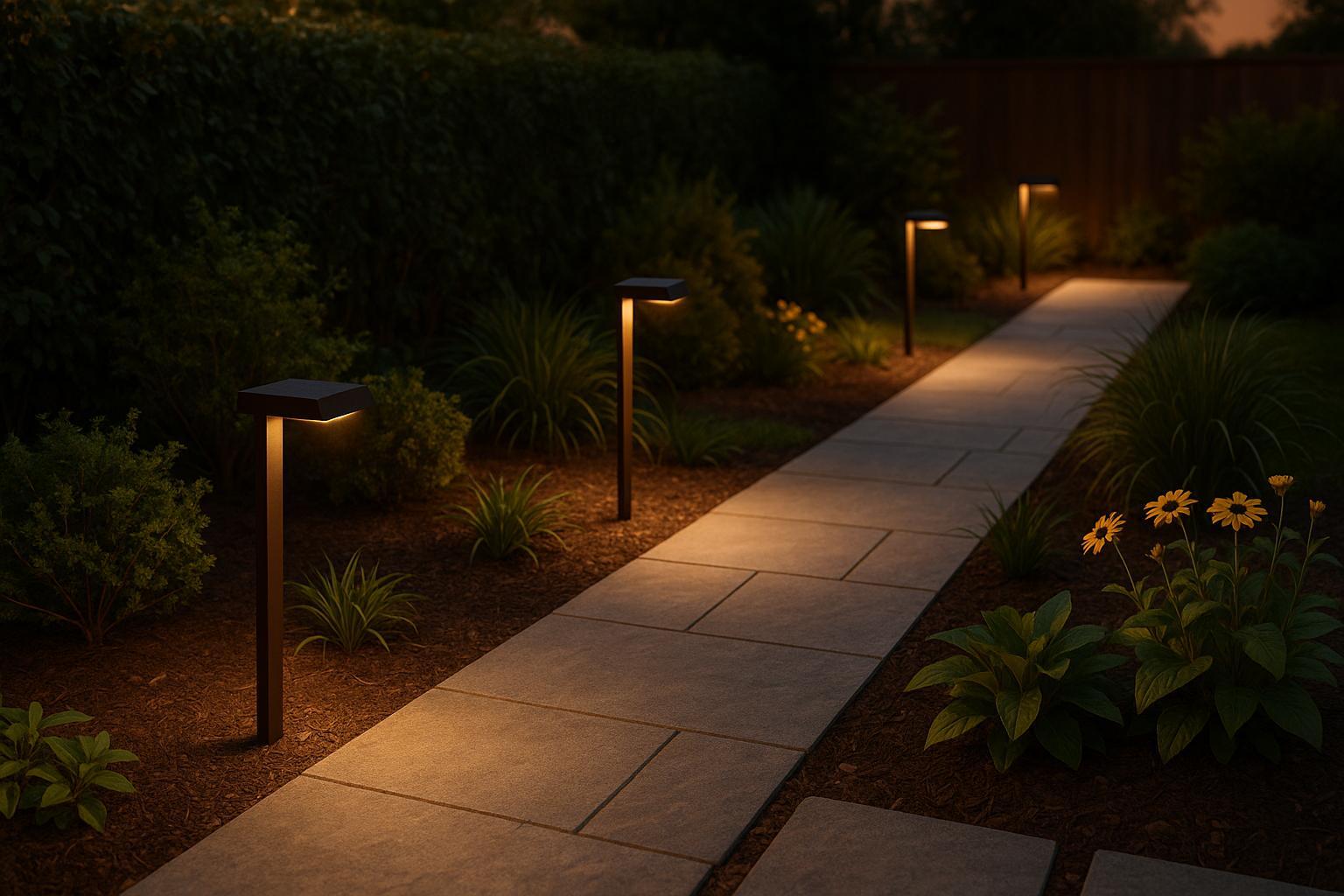
Checklist for Weatherproof Low Voltage Lighting Installation
Learn how to effectively install and maintain weatherproof low voltage lighting for your outdoor space with this comprehensive guide.
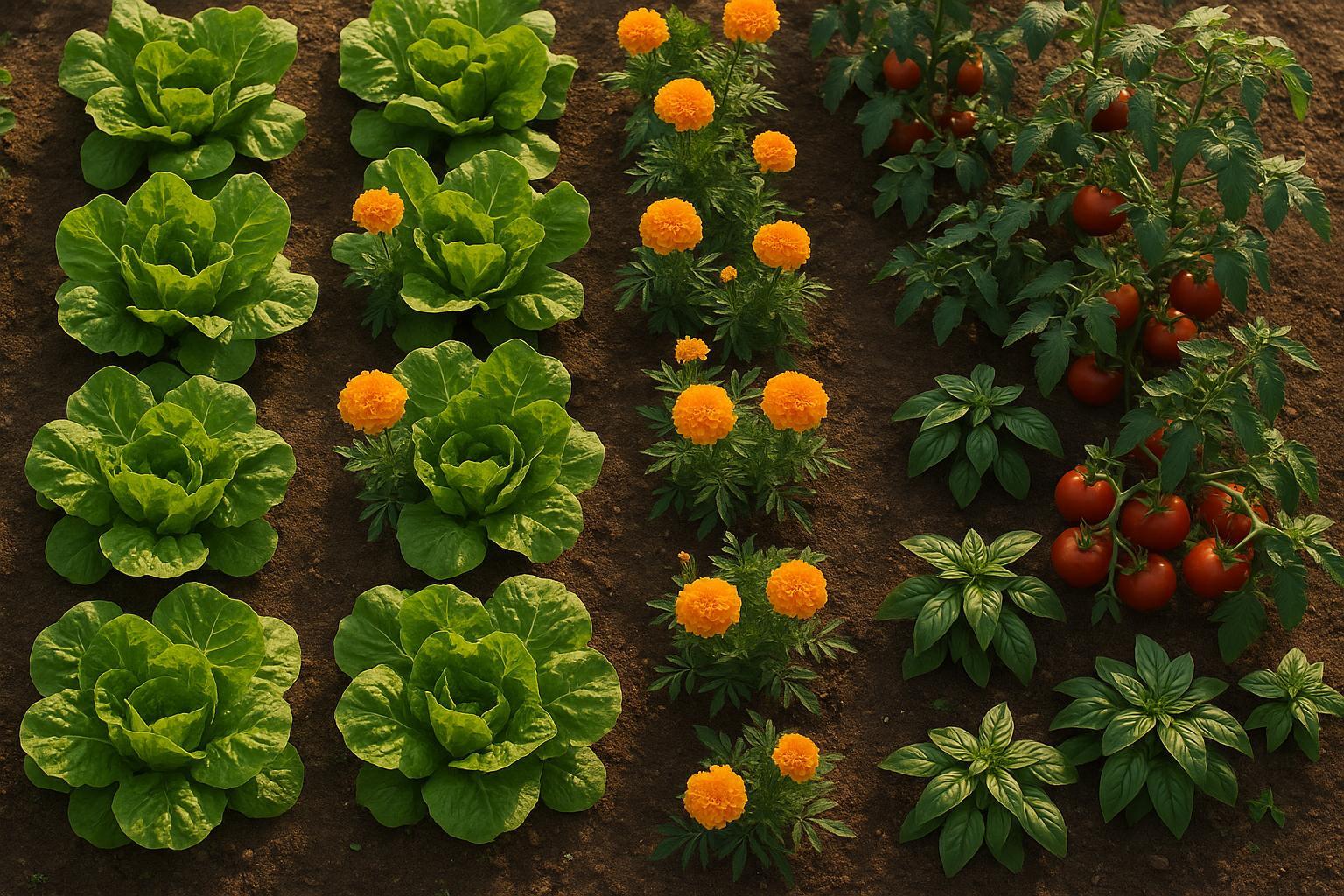
How AI Improves Companion Planting Layouts
AI transforms garden planning by optimizing companion planting through smart pairings, space-efficient layouts, and tailored care instructions.
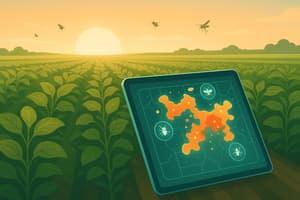
AI Models for Pest Outbreak Prediction
AI models are revolutionizing pest outbreak prediction, enabling early warnings and sustainable management for healthier crops and gardens.

Professional Garden Design: Common Questions Answered
Explore how professional garden design enhances outdoor spaces, incorporating AI tools, trends, and cost insights for a beautiful, functional garden.
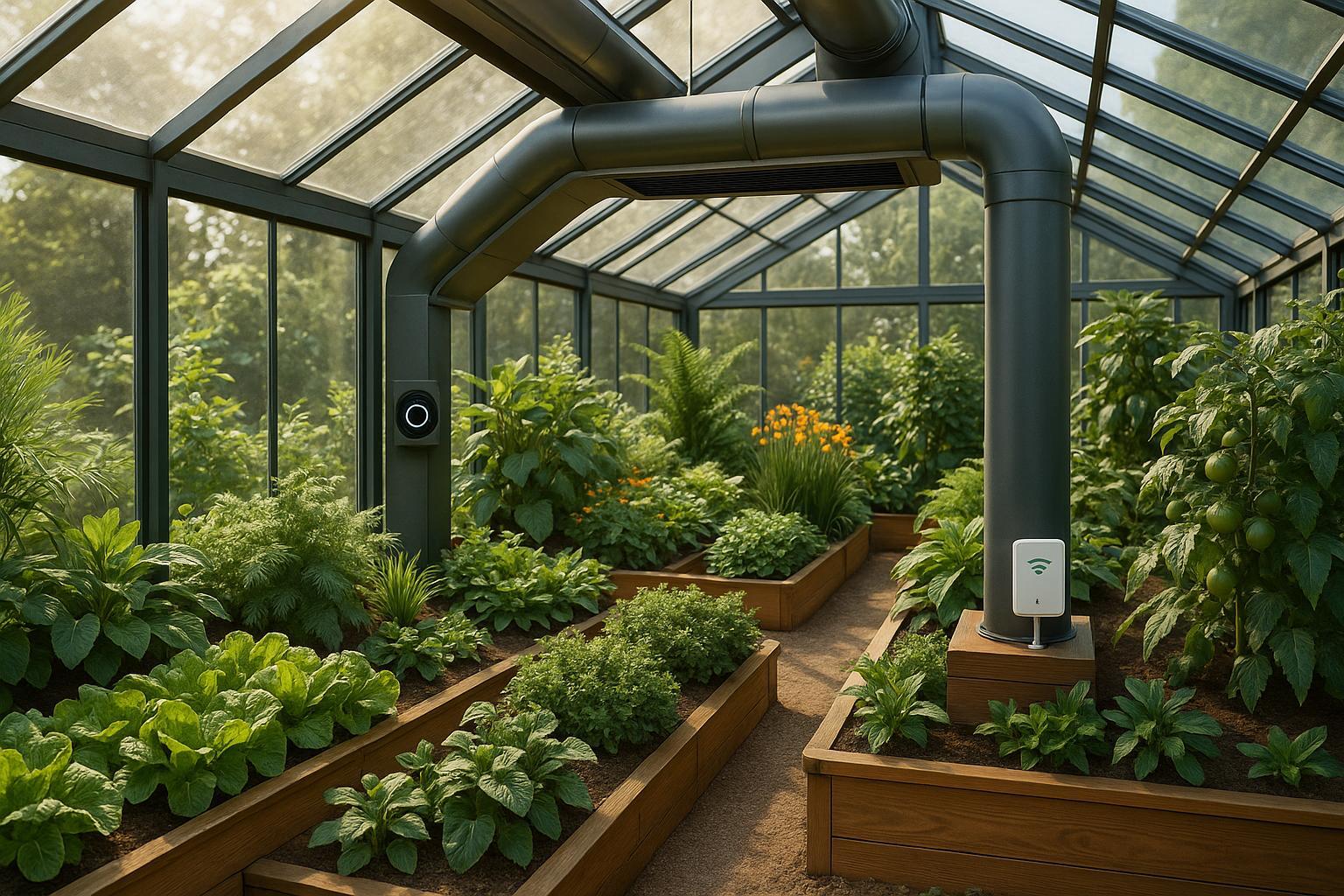
AI-Powered Ventilation for Climate-Specific Gardens
AI-powered ventilation systems optimize garden climates with real-time data and smart technology, enhancing plant health and energy efficiency.